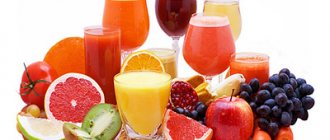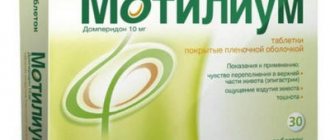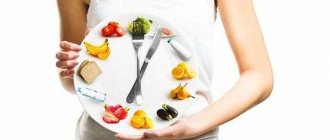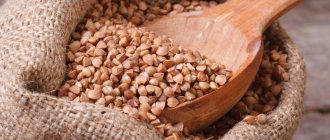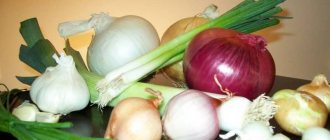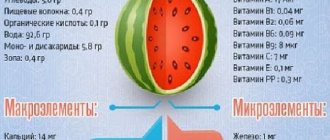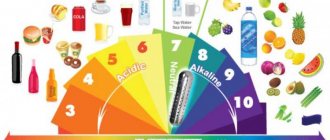Symptoms of gastritis with low acidity, treatment and diet
Gastritis with low acidity is a common type of inflammation of the gastric mucosa. With it, the acidity level of gastric juice and its volume decrease, which causes a decrease in the stomach’s ability to digest food. In addition to improper digestion, this disease entails even greater danger. The natural level of acidity protects the stomach from the penetration of infections into the intestinal cavity.
With low acidity, there is a possibility of intestinal infections and inflammatory processes. Like any form of this disease, gastritis with low acidity causes regular abdominal pain, and can also transform into gastroduodenitis, stomach cancer and peptic ulcers.
Reasons for development
Gastritis with low acidity or hypoacid is an inflammation of the gastric mucosa, in which the glands that produce hydrochloric acid gradually atrophy. Because of this, the acidity of gastric juice decreases, it can no longer dissolve and digest food as effectively, as a result of which the absorption and assimilation of nutrients is impaired and deficiency states develop.
Since this disease is most often diagnosed in old age, the main reasons for its development are considered to be poor lifestyle choices: overeating, alcohol and cigarette abuse, and decreased physical activity.
The main reasons for the development of the disease:
- Internal - have less importance in the development of this disease, these include: other inflammatory diseases of the gastrointestinal tract, endocrine disorders, the formation of antibodies to the cells of the gastric mucosa.
- External – overeating; coarse, difficult to digest food, the habit of eating very salty, spicy, hot foods, fried and canned foods; smoking; alcohol abuse; Helicobacter pylori infection.
Unfavorable external and internal factors cause inflammation and damage to the gastric mucosa, cells lose the ability to quickly regenerate, the functioning of the glands is gradually disrupted, less and less hydrochloric acid and gastric juice are produced, and the cells atrophy. The motility of the stomach and intestines is also disrupted, and the contents of the duodenum are refluxed into the stomach, causing the mucous membrane to become even more inflamed.
Types of disease
Depending on the location and accompanying symptoms, gastritis can be of the following types:
- Atrophic gastritis with low acidity. Thinning of the mucous membrane is observed, tissues die and lose their protective function. It is divided into antral and diffuse. A severe decrease in the level of acid in the stomach is the most dangerous condition, as it can provoke cancer. The exact cause of its development has not yet been established, but overeating, poor diet, and taking hormonal medications and antibiotics as self-medication play an important role.
- Chronic gastritis of the stomach with low acidity. This disease, in turn, is divided into the stage of compensation, partial compensation and decompensation. The chronic variant develops slowly: initially, acidity increases significantly. If treatment is not started, the acid-producing cells die and little is produced. Acidity returns to normal. With further progression, atrophy (death) of the gastric mucosa begins, and a chronic version of the disease occurs. Chronic gastritis with decreased secretion is often caused by the bacterium H. Pylori.
Symptoms of low performance
Symptoms and treatment of low stomach acidity have their own characteristics. It is important to know what signs accompany the deviation. This is necessary to prevent complications in a timely manner. Indicators below normal indicate dysfunction of the secretion nodes, which complicates the digestive process.
Regularly lowering the acidity will lead to a build-up of undigested particles over time. Gastric juice disinfects ingested food products. If there is a lack of acid, this process cannot be carried out fully. A favorable environment for the life of pathogenic microflora arises. Inflammatory processes appear.
Doctors identify the following main symptoms of low stomach acid:
- change in the characteristic features of the stool;
- excessive gas production;
- feeling of bitterness in the mouth;
- pain in the stomach;
- nausea.
One of the symptoms of low acidity is increased gas production.
In order to find out how to increase stomach acidity, you should pay attention to all the features of the current condition. The listed signs appear at an early stage of the formation of the disorder. They may not be expressed. Additional deviations will gradually appear.
Low stomach acidity is also characterized by:
- decreased appetite;
- loss of strength;
- the presence of undigested food residues in feces;
- unpleasant rotten odor from the mouth;
- stomatitis.
Gradually the signs become more pronounced. The patient feels fullness in the stomach, despite the fact that the meal was long ago. The skin dries out. Rashes appear, hair falls out, and the stomach often growls. Diarrhea gives way to constipation. The immune system stops working fully.
If your breath smells bad, this may also indicate low acidity.
The patient may complain of one or several negative symptoms. If you experience unpleasant symptoms, you should contact a medical facility.
The need to normalize indicators
If signs of abnormality appear, you should visit the hospital. The doctor will tell you how to treat low stomach acidity. Hydrochloric acid is necessary for the normal functioning of the gastric sphincter and the movement of food. The component helps to disinfect food and water that enter the body.
Only at a normal level of acidity does the body absorb:
- magnesium;
- calcium;
- selenium;
- zinc.
The absorption of many minerals is possible only with normal acidity
Everyone should know how to increase stomach acidity. This is due to the fact that low levels create a favorable environment in the digestive organ for the development of microorganisms. The body becomes vulnerable to various infections.
The patient may experience anemia. There is a lack of vitamins, microelements and some enzymes. There is a risk of developing serious illnesses. An allergic reaction and intoxication of the body with waste products of pathogenic bacteria occurs.
Treatment for low stomach acidity should be started as early as possible. This is necessary to prevent the development of serious deviations. If it is violated, a person loses the ability to fully digest heavy protein foods. His appearance deteriorates. There is a visible loss of strength. The patient constantly wants to sleep.
With this pathology, loss of strength and drowsiness are observed.
If left untreated, the symptoms become more pronounced and cause great discomfort. Vomit contains remnants of undigested food.
Normalization of indicators using nutrition
Gastroenterologists are often approached by patients who want to know which foods effectively increase stomach acidity. This is no coincidence, since in the early stages of development of the disorder, to normalize the indicators, it is enough to just slightly adjust the diet.
Drug therapy for low acidity is always accompanied by diet. This is the key to a quick recovery. Nutritional recommendations are selected depending on the patient’s condition. First of all, you need to reduce the number of products taken at one time. Portions are reduced. The diet should include plenty of fruits and vegetables.
If you have low acidity, it is good to eat citrus fruits.
A diet for low stomach acidity involves eating citrus fruits. First, they are added to the diet in small quantities. Doctors recommend preparing a drink from lemon juice and water. Drink it before meals, it stimulates the digestive process. It is also advisable to give preference to kiwi and pomegranate.
With low acidity, it is useful to add gooseberries and rosehips to the diet. The products contain the required amount of amino acids and vitamins. Natural ingredients are added to teas and compotes. Homemade fruit jelly is recommended for consumption. The drink should contain a moderate amount of sugar.
The patient needs to drink large amounts of fluid. Drinking sour juices is acceptable. Products that increase acidity help normalize levels in a short time. It is advisable to add fermented milk foods to your diet.
Fermented milk products will also help normalize acidity.
You should not add fatty or high-calorie foods to your diet. It is worth giving preference to light dishes. Acceptable use:
- lean fish cooked in a double boiler;
- boiled chicken;
- porridge;
- vegetables and fruits, previously peeled.
When eating food, you should wash it down with clean water. The diet should contain foods with sufficient amounts of vitamin C. They help normalize acidity levels.
Your diet should include more foods with vitamin C
Increasing performance with medications
Signs of low stomach acidity are a good reason to consult a doctor. Therapeutic measures include the use of medications and adherence to a strict diet. The tablets are prescribed by the doctor after diagnosis.
With a regular increase in acidity levels over a long period of time, coping with the disorder will not be easy.
Patients are recommended to take herbal medicines. When used correctly they are absolutely safe. The patient is prescribed special hormonal medications:
Patients may be prescribed Heparin
In emergency cases, the patient should take hydrochloric acid tablets. The medicine will help you fully digest food and eliminate negative symptoms. A gastroenterologist can prescribe pills.
Drugs that increase gastric acidity can be prescribed only after an accurate diagnosis has been established. A whole range of research is needed. Antispasmodics may be recommended. Most often - No-shpa.
The therapy is complex. Always combined with unconventional methods and special nutrition. Antibacterial agents may be needed. They are assigned a course of several names at once. The doctor also prescribes pills to eliminate nausea and the gag reflex.
The treatment regimen is selected depending on the individual characteristics of a particular patient. Vitamin complexes are required. They are necessary to restore the immune system. Physiotherapy is prescribed. Surgery may be needed.
In some cases, antispasmodics are necessary, for example, No-shpa
Medicines for low stomach acidity, like any other drugs, can provoke the appearance of individual intolerance and side effects. It is important to adhere to the recommended dosages. The production of hydrochloric acid is stimulated by:
- Etimizole;
- Limontara;
- Pentagastrina.
Preparations for low stomach acidity contain a large number of various additives. When you see a doctor, you should tell him about the presence of any allergic reactions.
The drug Limontar helps increase the level of acid production in the stomach
Alternative medicine
It is no coincidence that many patients are trying to figure out how to increase stomach acidity using folk remedies. Natural medicines rarely cause side effects. They are used together with medications.
Apples and cabbage are highly effective. To prepare the remedy you will need to take in equal quantities:
- apples;
- red currants;
- cabbage
First signs
The disease is accompanied by characteristic signs of a local and general nature:
- belching;
- nausea;
- regurgitation;
- a feeling of heaviness and pressure in the epigastric region after eating;
- unpleasant sensation in the mouth (especially in the morning);
- heartburn;
- burning in the epigastrium.
Immediately after eating, a dull pain occurs in the epigastric zone; Moreover, the pain sensation increases in a standing position and when walking. Intestinal dyspepsia is very often observed: rumbling, flatulence. With low acidity, diarrhea usually occurs, which worsens significantly after drinking milk or eating fatty foods.
Symptoms
The more acidity is reduced, the more clearly the symptoms of gastritis with low acidity will appear:
- Signs of excessive bacterial growth include rumbling, loose stools, milk intolerance, and bloating. If gastritis is accompanied by frequent diarrhea, weight loss may occur and signs of mineral or vitamin deficiency may develop.
- Dystrophy - signs of deficiency of B vitamins, as well as C, E, D, protein deficiency (weight loss, “polished” or coated tongue with a thick white coating).
- Dyspepsia - loss of appetite, feeling of heaviness or fullness in the stomach, belching of rotten food, bad breath (cocosmia), unpleasant taste, nausea.
- Dull, aggravated after eating, without clear localization, aching pain that occurs due to stretching of the stomach.
- Development of anemia due to decreased absorption of iron and vitamin B12 (due to Castle factor).
Since inflammation of the stomach also affects other parts of the digestive system, hypoacid gastritis is often accompanied by diseases such as enterocolitis, cholecystitis, and pancreatitis.
Sit down at the table with an appetite
The following is true not only when a diet is used for atrophic gastritis, but in general. Dishes should be appetizing. Although older people may experience an attack of hunger, they still more often sit down to the dinner table without desire or pleasure. To improve your appetite, add some of your favorite spices, onions, garlic, and sour fruits to your food.
The diet should contain enough animal and plant proteins. Try to diversify your dishes - include various cereals, pasta, legumes, vegetables, and fruits in your weekly menu. Give preference to easily digestible foods - fish, poultry, eggs, dairy products.
Carbohydrates - day-old bread, cereals, dried fruits - as well as animal and vegetable fats correct body weight. Your menu includes butter, sour cream, cheese, vegetable oil (at least 1 tablespoon per day), nuts, seeds.
Don't forget about foods that are sources of vitamins. Let me remind you that vitamin C is contained in vegetables, fruits, berries, especially black currants, sea buckthorn and rose hips. Vitamins D and E - unrefined vegetable oil, egg yolk, liver. B vitamins – brown bread, nuts, whole grains, rice, peas, cabbage, milk, meat.
Patients with cardiovascular pathologies need foods rich in potassium and magnesium. Dried apricots, black currants, raisins, prunes, potatoes, green peas contain a lot of potassium, and bran, buckwheat, and beans contain a lot of magnesium. Sources of phosphorus, zinc, calcium, iron - cauliflower, cucumbers, walnuts, wheat, fish, liver, meat.
Diagnostics
A gastroenterologist and endoscopist are involved in the diagnosis and treatment of gastritis with low acidity. The specialist examines the patient and conducts a number of examinations:
- morphological studies;
- X-ray of the stomach;
- esophagogastroduodenoscopy;
- endoscopic biopsy;
- gastroscopy;
- determination of pepsinogen level;
- gastric probing with intragastric pH-metry;
- examination of gastric juice;
- diagnosing pylori using stool ELISA, PCR testing, detection of antibodies in the blood and a breath test for this microorganism.
The purpose of these studies is not to confuse the disease with other pathologies and to make an accurate diagnosis. Based on the examination results, the gastroenterologist prescribes a treatment regimen. If required, the attending physician will refer you for a consultation with a nutritionist, who will create an appropriate diet. In some cases, to eliminate concomitant diseases, consultation with other specialists of a narrow focus (cardiologist, therapist) is required.
Nutrition after stroke
In her letter, the woman writes about a recent stroke, as well as chronic atrophic gastritis and underweight. Unfortunately, the author did not report what her weight was before the illness, when it dropped and by how much, what she eats, whether she follows a diet, what concomitant diseases caused the stroke, what medications she takes... This information would have made our conversation more substantive.
Post-stroke patients always face two tasks: to recover from a stroke and to prevent another. There is no special diet for such patients. Nutrition is adjusted individually taking into account blood pressure, the severity of atherosclerotic changes in blood vessels and the level of cholesterol in the blood, since it is often elevated in patients with chronic vascular diseases. In particular, for hypertensive patients, neurologists prescribe special drugs - statins - to reduce cholesterol and recommend limiting fat intake to 75-80 g per day, with half coming from vegetable oil.
I advise you to take these dietary features into account if your cholesterol levels are elevated. I also note that patients suffering from hypertension and having had a stroke are more likely to be overweight, which needs to be reduced. For the author of the letter, underweight is determined by one’s state of health.
Complications
With prolonged inflammation in the gastric mucosa, atrophic gastritis with low acidity can occur, which is characterized by changes in cell structure and their death.
As a result of atrophic processes, the number of properly functioning cells decreases, and it becomes difficult for them to secrete enzymes and mucus in the required volume, which disrupts the absorption of nutrients. If the disease becomes chronic, the gastric mucosa becomes thinner and food is not completely digested and absorbed.
The danger of this disease is that often, without treatment, it turns into cancer (according to statistics, the probability of the disease is more than 10%). Cancer processes can occur due to insufficient antitumor protection of the mucosa. To avoid tumor processes and further complications, it is important to be thoroughly examined and begin therapy at an early stage.
Prevention of gastritis
The principles of disease prevention are based on the correct organization of the daily routine, normalization of nutrition, regular exercise and abandonment of bad habits.
Food should be taken in small portions and chewed thoroughly. Also, food should not be too cold or hot.
Attention! If you identify symptoms of gastritis, do not self-medicate and consult a specialist. This is important, because such a seemingly harmless disease can lead to serious complications.
How to treat gastritis with low acidity?
Typically, treatment of gastritis with low acidity is long-term and complex. Since this disease is characterized by problems with juice secretion, drugs are usually prescribed that can stimulate the normal functioning of this function. A medicine is also prescribed to restore gastric motility.
The gastritis treatment program includes:
- suppression of the active inflammatory process in the gastric mucosa - antibiotics and antimicrobial agents are prescribed to which the pathogen is sensitive (the drugs and their dose are prescribed by a gastroenterologist);
- replacement and enzymatic therapy - for this purpose pepsin, hydrochloric acid, complex enzymatic preparations (panzinorm, festal, mezim, enzistal) are used;
- restoration of impaired motility of the digestive tract - use drugs that activate the movement of the food bolus through the gastrointestinal tract and eliminate spasm of intestinal smooth muscles;
- vitamin therapy - it allows you to eliminate the symptoms of hypovitaminosis in patients;
- A mandatory component of the treatment of gastritis with low acidity is the use of diet.
Before prescribing treatment, it is necessary to conduct a comprehensive examination of the patient and determine the acidity of the stomach, as well as examine the condition of the mucous membrane (fibrogastroduodenoscopy and fluoroscopy are required).
Treatment
Therapy must be adequate, long-term, and most importantly comprehensive.
Diet
Rational, balanced and gentle nutrition is the basis for the treatment of gastritis in adult patients.
To achieve success, it is important to exclude from the patient’s diet alcoholic beverages, sweets, baked goods, products containing caffeine (cocoa, coffee, strong tea), fatty fish (mackerel, trout, salmon) and meat (goose, lamb, pork), canned food, spices , as well as fresh vegetables and fruits.
The patient's diet is based on fruit compotes, jelly, porridge with water or low-fat milk, dried bread, boiled and pureed vegetables, and weak broths. Meat products allowed include turkey fillet, chicken fillet or lean beef.
Drug therapy
Among the medications used to treat gastritis, the following groups are distinguished:
- H2 receptor blockers (ranitidine).
- Antacids (Phosphalugel, Almagel).
- Proton pump blockers (Omeprazole, Pantoprazole).
- Antibacterial drugs (Clarithromycin, Metronidazole).
To prevent the development of dysbiosis and other undesirable manifestations during treatment, patients are recommended to take a course of digestive enzymes and probiotics.
Folk remedies to increase stomach acidity
Low stomach acidity requires very serious attention and treatment. But often very positive results can be achieved by properly selected nutrition.
- A drink made from sea buckthorn berries is very useful.
- A very healthy and tasty habit: half an hour before meals you need to drink a few sips (50–70 grams) of honey water, for which you need to dissolve half a teaspoon of honey in warm water.
- For low stomach acidity, apricots in any form have proven themselves very well - fresh, dried (apricots, dried apricots) - and apricot juice.
- A decoction or infusion of rosehip, which is also very good to drink before meals, perfectly helps regulate low stomach acidity.
- Fresh cucumbers also slightly increase the acidity of gastric juice if they are properly chopped (the finer the better).
- Grapes are useful - it is recommended to eat up to 150 grams of fresh grapes 20 minutes before meals.
- Fresh turnip salad has long been used to increase acidity: fresh turnips must be grated and seasoned with vegetable oil (salt should be taken to taste, but not overused).
- Beans help increase and normalize the acidity of gastric juice.
- Freshly prepared carrot juice is very useful, which should be drunk shortly before meals, a quarter glass.
- With low stomach acidity, the benefits of blueberries are generally recognized, which can be used in pies, dumplings, and compotes.
- A long-term and persistent increase in the acidity of gastric juice ensures the consumption of a variety of meat foods. However, it should be remembered that for any diseases of the gastrointestinal tract, you should choose only lean meat (this could be lean pork, veal, rabbit, skinless poultry).
Also, to normalize the acidity of gastric juice, decoction and juice of plantain, calamus root, trefoil (also known as trifolium or water trefoil), gentian, marsh cudweed, lingonberry, St. John's wort, buckthorn, rhubarb, yarrow, rowan, centaury, immortelle, aloe, thyme are used and many other herbs, fruits and berries that our land is rich in.
Diet and proper nutrition
If you have gastritis with low acidity, a strict diet is required. It should include:
- Cereals and pasta. Rice, buckwheat, oatmeal, and semolina are allowed.
- Soups - with low-fat chicken or fish broth, vegetable, vermicelli, cereal, with meatballs.
- Lean meat (chicken, beef, rabbit, turkey). Fish (pike perch, hake, pollock, pike).
- Eggs – no more than 2 pieces per day.
- Seasonings and sauces - vegetable oil, salt, herbs.
- Vegetables - beets, pumpkin, carrots, tomatoes, zucchini, cauliflower.
- Dairy products - cottage cheese, sour cream, mild cheese, milk, yogurt.
- Sweets - biscuits, marshmallows, marshmallows, marmalade.
- Fruits and berries – pureed (jelly, compotes, jelly, soufflé).
- Drinks – tea, rosehip infusion, weak coffee.
- Bakery products - yesterday's white bread, uneatable crackers.
Exclude from the diet:
- Pastries, sweets, fresh bread.
- Soups with mushrooms and fatty broths.
- Legumes, barley, corn and millet porridge.
- Large-grained and rough-skinned berries and dried fruits.
- Hot sauces, store-bought dressings, mayonnaise.
- Fatty meat and fish.
- Cucumbers, bell peppers, cabbage, turnips, radishes, mushrooms. Pickles and marinades are not allowed.
- Fast food, alcohol, carbonated drinks, packaged juices.
It is important that meals are fractional - 5-6 times a day. It is better to snack on vegetable or fruit purees or dairy products.
The diet for gastritis with low acidity is quite loyal - the patient will not suffer from hunger, but at the same time will not experience a feeling of overeating. If the proposed diet is followed for a long time, the symptoms of gastritis will appear less and less often and a long-term remission will occur.
Proper nutrition for gastritis in the acute phase
If gastritis is in the acute phase, the following tactics are usually used:
1.
On the first day, when an attack of reactive gastritis has just occurred, it is better to abstain from food altogether, allow the stomach to rest from digesting food, and allow the mucous membrane to recover a little. From the liquid you can drink slightly warm tea and water. During this period, people usually experience a decreased appetite - this is a deliberate reaction of the body, dictated by its needs for rest.
2.
On the second or third day, you can switch to table No. 1A, which involves taking liquid food, viscous cereal or milk soups, meat and fish purees (from low-fat varieties), and soft-boiled eggs. Butter and vegetable oil are allowed in small quantities. You can drink decoctions, jelly, weak tea (with honey), water.
Fresh fruits and vegetables, baked goods and confectionery, rich meat broths, fermented milk drinks, cheese, coffee, and any soda remain prohibited. Add salt in minimal quantities; you will have to discard spices. Nothing hot, sour, spicy or fatty is allowed.
3.
After the end of the acute period and the onset of remission, a doctor or nutritionist trained in clinical nutrition will prescribe you a special gentle diet. It will have to be followed as long as necessary (in cases with chronic forms of gastritis - throughout your life).
To alleviate the condition during exacerbation of gastritis, adhere to the following menu (an approximate diet that can be recommended by a gastroenterologist or nutrition consultant after the acute symptoms of the attack have been relieved):
Breakfast
- 200 g semolina or rice porridge with a small piece of butter;
- a glass of warm tea with milk.
Snack
- 150 g cottage cheese casserole or steamed cheesecakes;
- 200 ml milk.
Dinner
- 150 g meat puree (lean varieties, for example, boiled chicken fillet);
- 200 g boiled rice (porridge);
- 200 ml compote or dried fruit jelly.
Afternoon snack
- 1 soft-boiled egg;
- 200 ml oatmeal jelly.
Dinner
- 200 g puree from boiled lean fish;
- rosehip decoction.
Before bedtime
- 200 ml milk.
